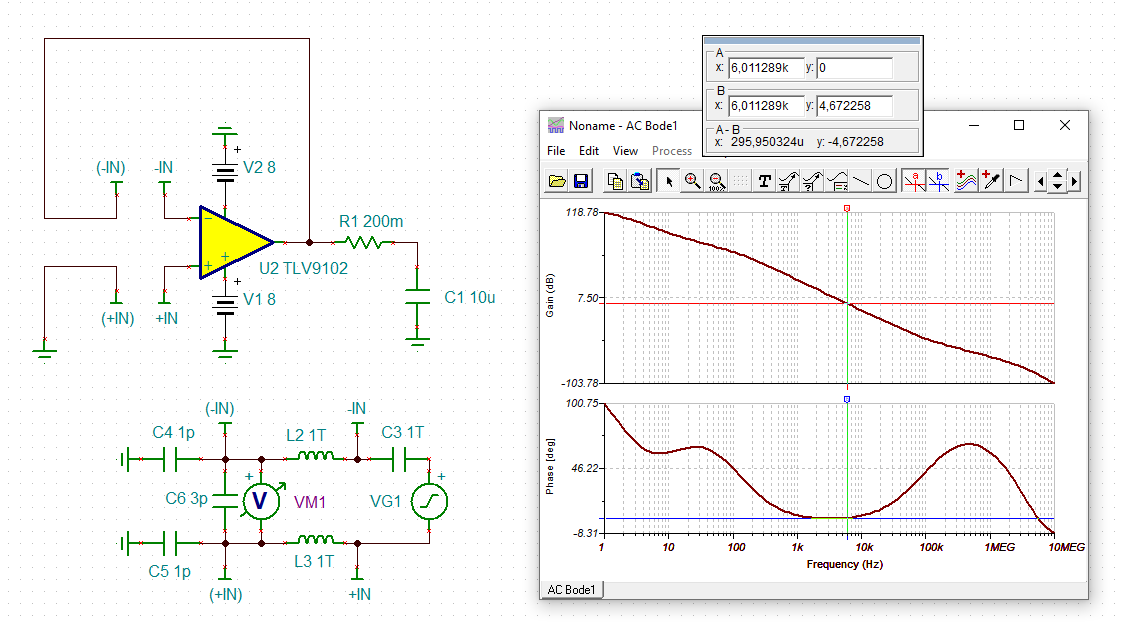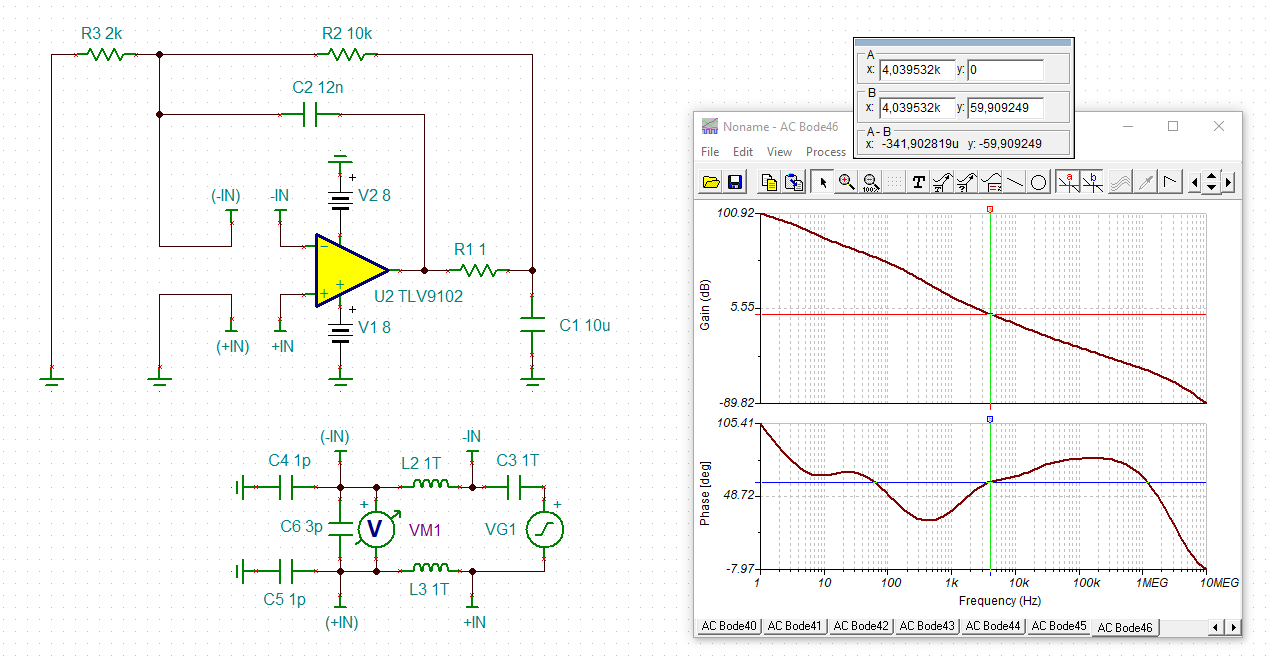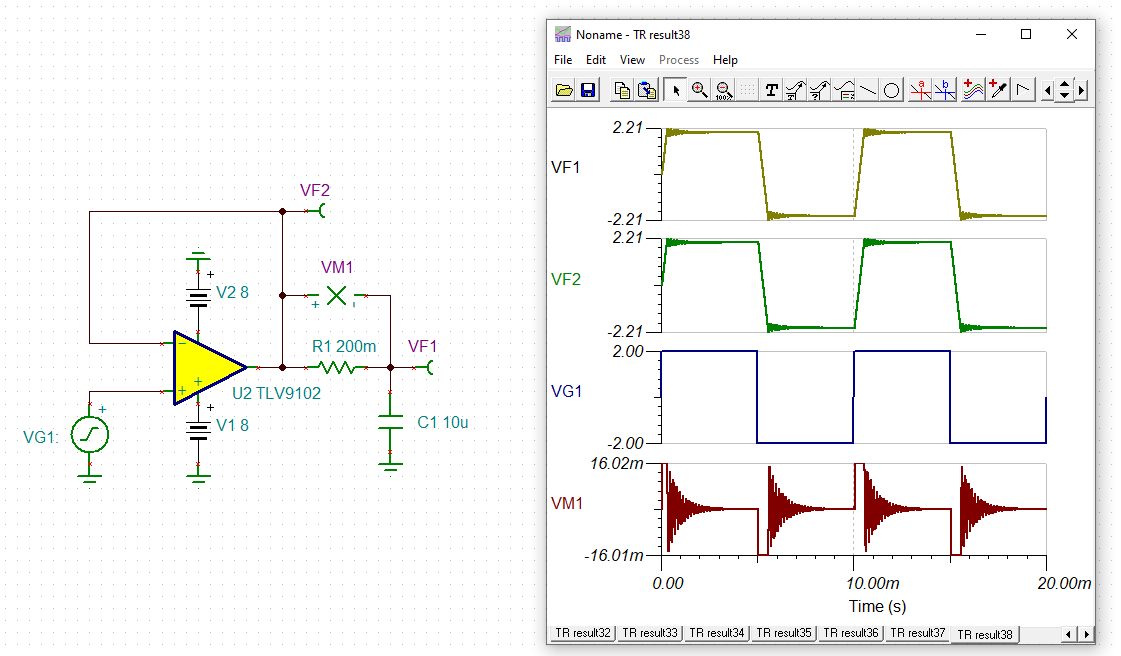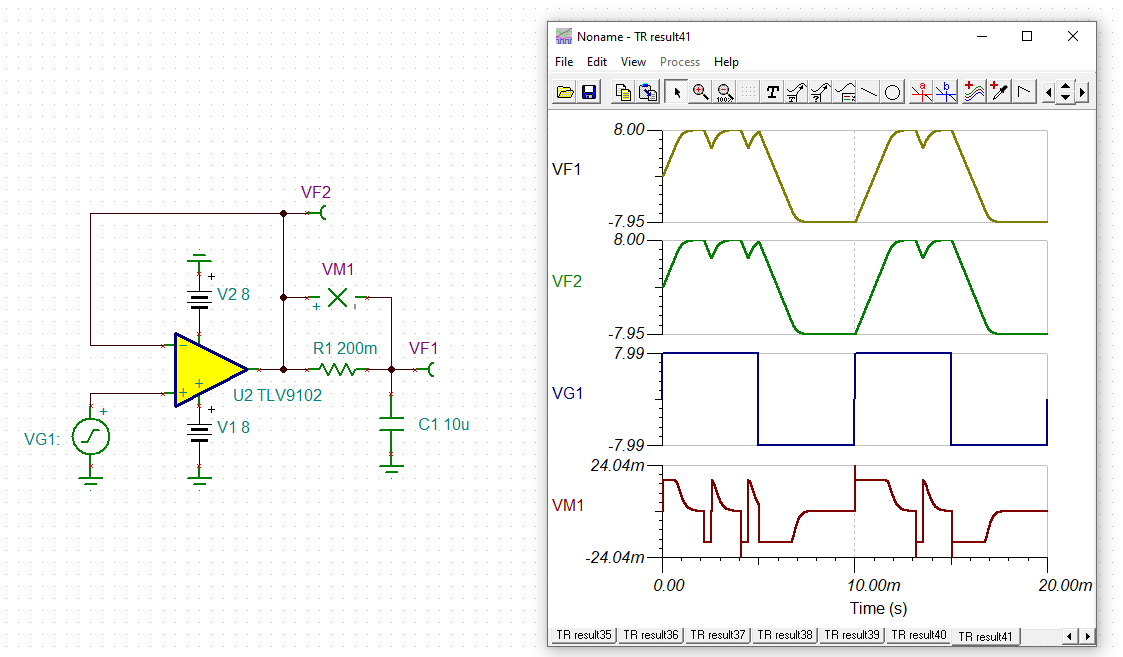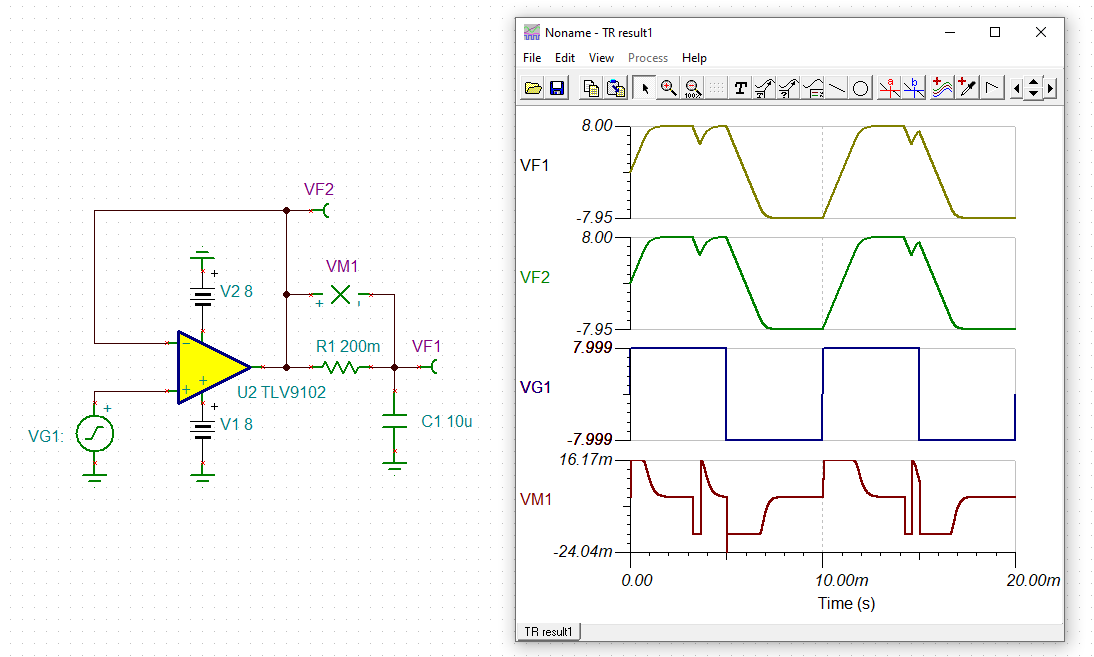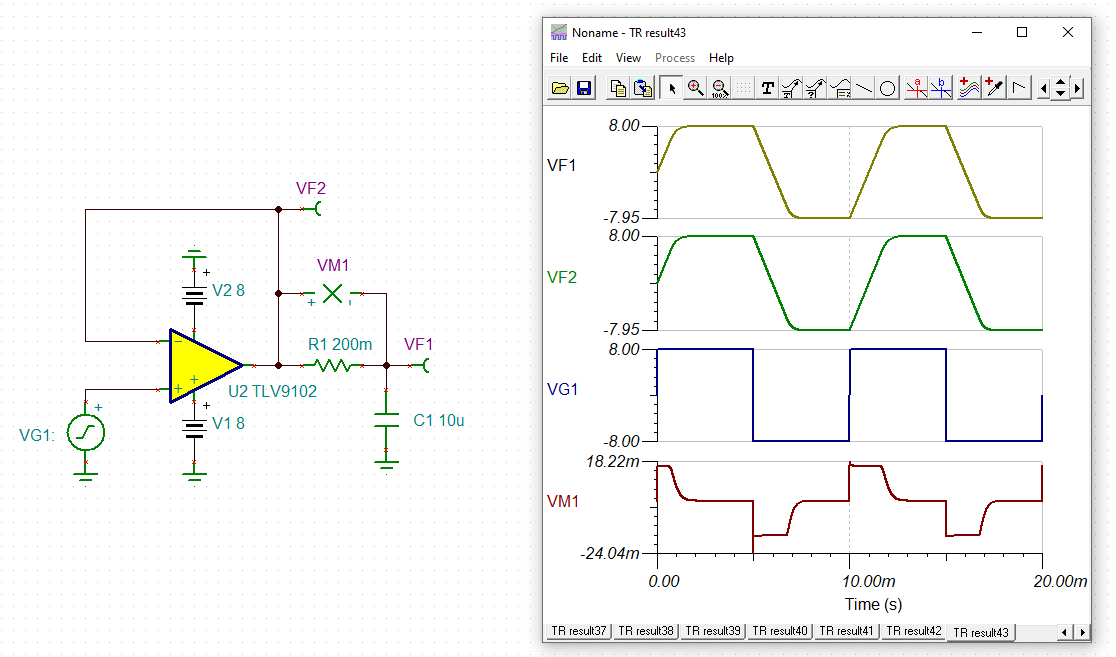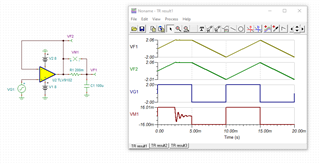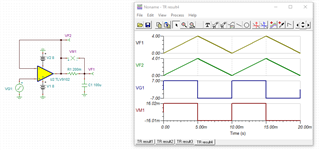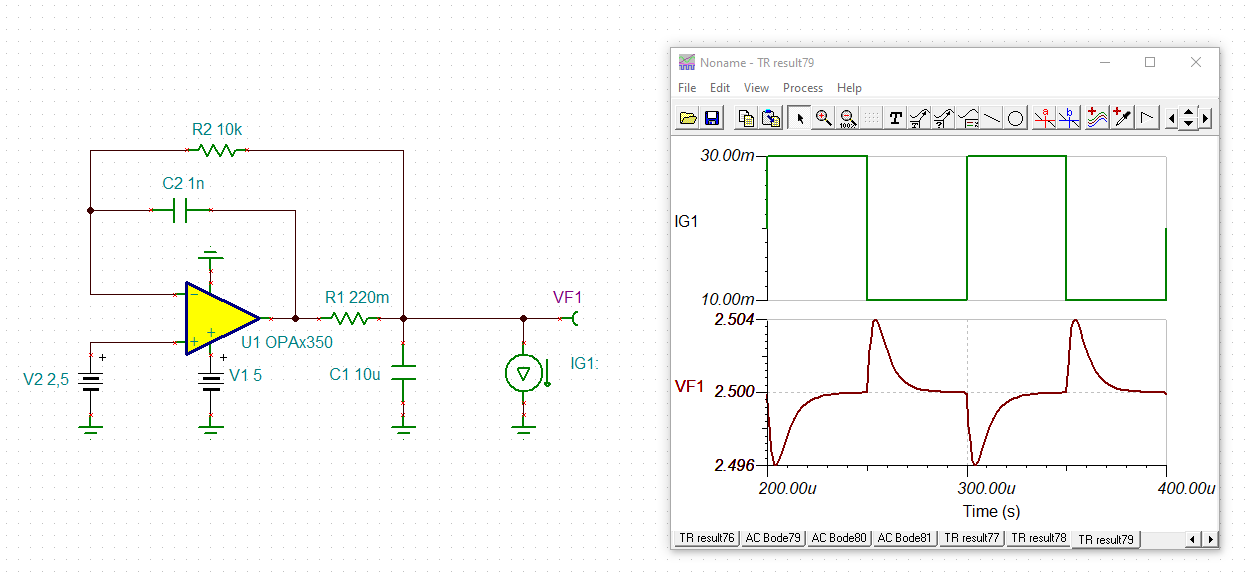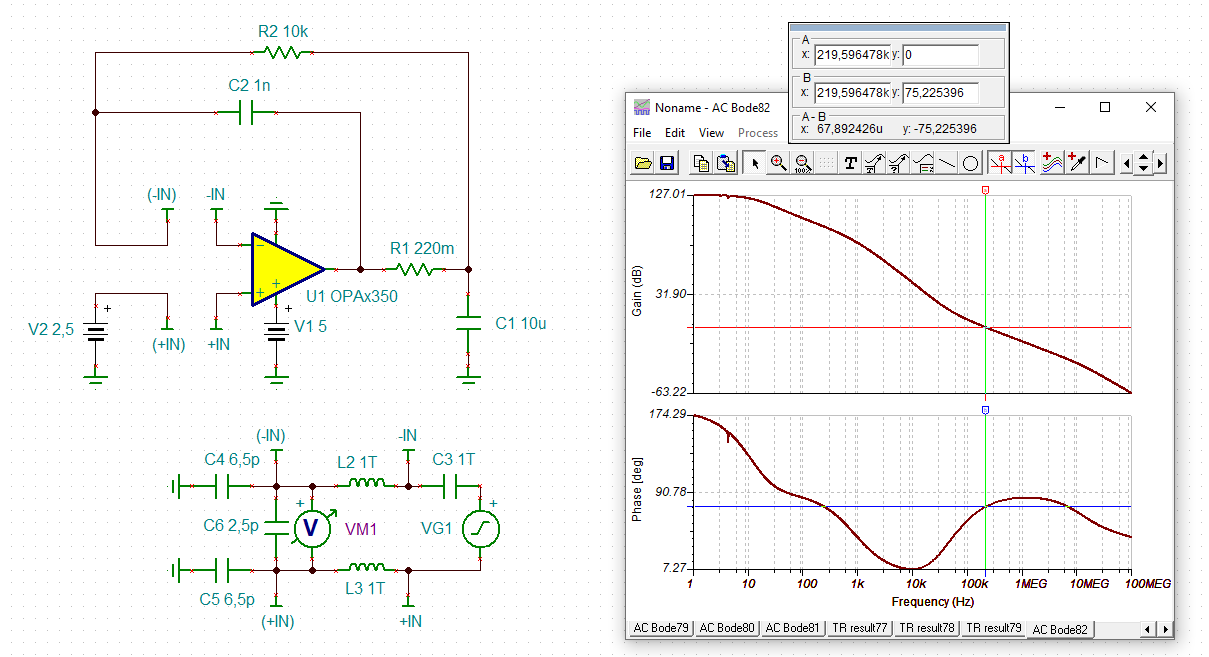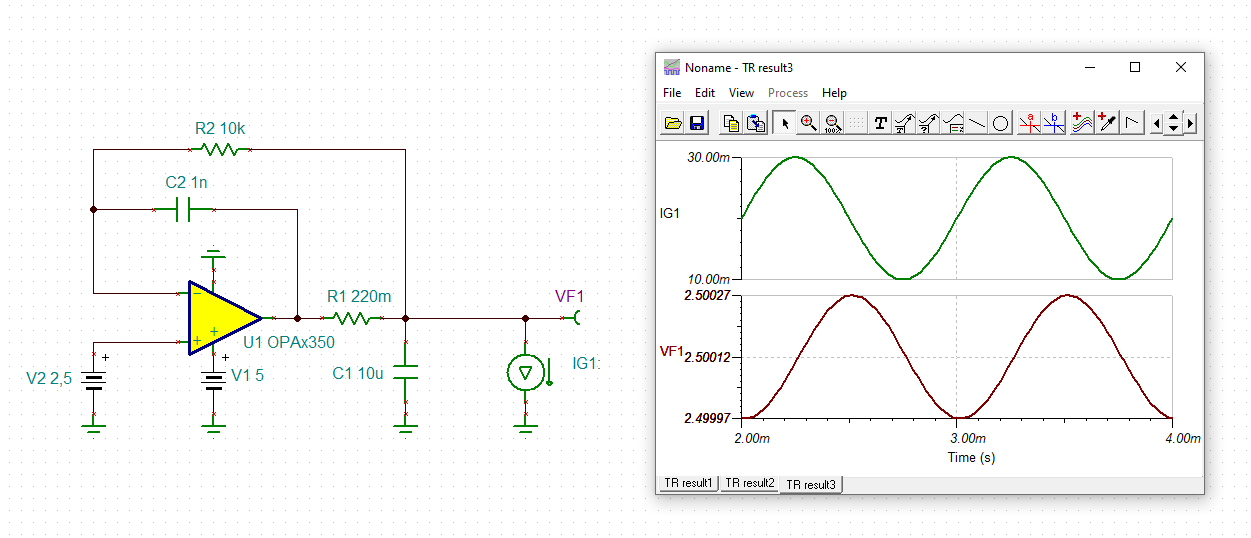Other Parts Discussed in Thread: TINA-TI, , TLV9152, REF3425-EP, OPA2350, OPA350, OPA2328, OPA2613, LM8272
What is the behavior of this OP if it will be used driving a really large capacitance. I’m thinking about 10 µF (or even larger). If there is an isolation resistor between OP output and the capacitor of 0.2 Ohms, I will get a RC time constant of 2 µs. This time constant for loading or disloading the RC combination will be greater than the overload recovery time, listed in the data sheet with 600 ns = 0,6 µs. The OP will be used as 1:1 voltage follower (gain = +1).
Therefore, I would expect that this OP will go into saturation, driving the maximum possible output current and the voltage at the capacitor will go into the desired direction.
Then, if the voltage of the capacitor is close to the final value, the voltage difference between the input pins of the OP will get smaller and the OP will come out of saturation, reducing the output current. Now the OP will regulate the output current according to the residual voltage difference, and the output signal will settle, without any ringing, at the nominal output voltage.
Is this assumption correct?
Or, are there any additional effects causing the OP to start ringing which never ends?


